Akashi Kaikyo National Government Park – Kobe Area
What is the Akashi Kaikyo National Government Park?
The Akashi Kaikyo National Government Park is centered around the Akashi Kaikyo Bridge, and consists of an Awaji area, and a Kobe area. The total size of these two areas is 330ha. The fundamental principle of the park is to create an area where “Humans and nature co-exist, and people can meet”.
The concept of Awaji area is to create a recreational space near the shore, with that of the Kobe area (affectionately known as “Aina Satoyama Park”) being a Satochi and Satoyama cultural park. The aims of the park are to preserve and restore the area’s Satochi-satoyama scenery, allow city dwellers to experience Satoyama, and provide a variety of educational programs.
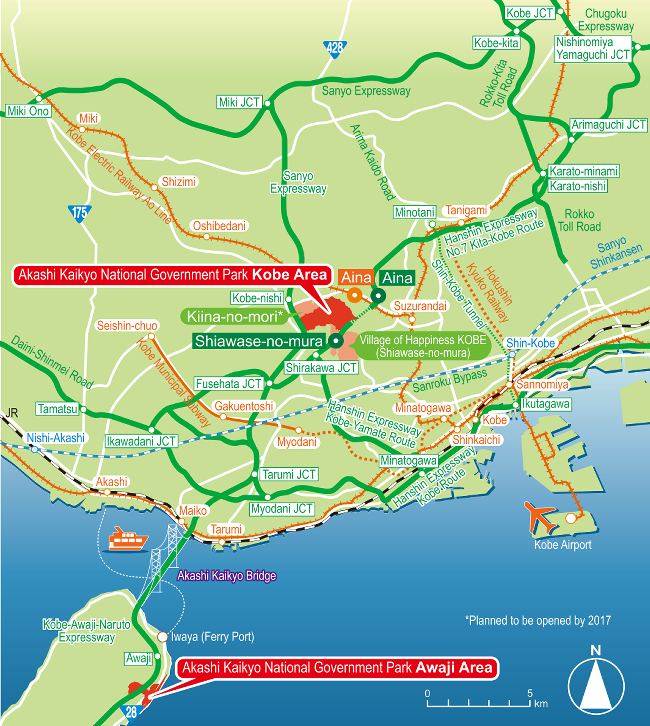
Aina Satoyama Park Guidebook Download
Aina Satoyama Park Guidebook 1
Aina Satoyama Park Guidebook 2
What kind of place is the Aina Satoyama Park?
- An area where visitors can enjoy seasonal Satoyama scenery.
- The park offers a variety of educational programs that allow anyone to experience the nature of Satoyama, living with Satoyama, as well as cultural programs.
- It aims to protecting the diverse nature of Satochi-satoyama, while maintaining the history and culture of the region.
- It also aims to gain the cooperation of local citizens’ groups to maintain the park and provide cultural programs, and operate the park in connection with other nearby parks.
Park Information
Opening Hours
| 4/1 – 6/30 | 9:30–17:00 |
| 7/1 – 8/31 | 9:30–18:00 |
| 9/1 – 10/31 | 9:30–17:00 |
| 11/1 – 3/31 | 9:30–16:00 |
* Last admission is one hour before closing.
Closed
Year-end and New Year (Dec 31 & Jan 1), five weekdays of February
Admission Fees
| Aged 65 & over | Adult (15 or above) | Child (Elementary/Junior high school) | |
| General | 210 yen | 450 yen | Free |
| Groups | 210 yen | 290 yen | Free |
| Year-round Passport Tickets | 2,100 yen | 4,500 yen | – |
- Children under 6 years old: Free admission.
- Handicapped: Holders of a physical disability certificate, rehabilitation certificate, or mental illness disability certificate, along with one carer, may enter free of charge.
- Groups: Applied for groups of 20 or more, of elementary school age or higher (includes holders of the aforementioned disability certificates, as well as Year-round Passport Tickets).
Parking Fee
Standard/Passenger Vehicles \500; Large Vehicles \1,600; Motorbikes \100
Access
By Train/On Foot
From Sannomiya/Shin-Kobe
- Take Hankyu Dentetsu from Kobe-Sannomiya Station to Shinkaichi Station. Change to the Kobe Dentetsu Ao Line and alight at Aina Station. 20 minutes on foot from the station to the Aina Pedestrian Entrance (Approx 60 mins in total).
- Take the Kobe Municipal Subway from Shin-Kobe Station to Minatogawa-Koen Station. Change to the Kobe Dentetsu Ao Line alight at Aina Station. 20 minutes on foot from the station to the Aina Pedestrian Entrance (Approx 60 mins in total).
From Shiawase-no-mura
- Approximately 15 minutes on the free bus from Shiawase-no-mura Honkan-mae to Aina Satoyama Park Nagayamon Gate (There are also city buses leaving from Sannomiya and Myodani Station).
*Please see the following map for more information on how to get to Shiawase-no-mura.
By Car
Entry from “Ainaguchi Entrance”
- Expressway(Hanshin Expressway Kita-Kobe Route): Exit at the Aina IC and turn right. Approximately 5 minutes west along with Oubu-Akashi Road (Pref. Rd. 52) (entry is directly after exiting the Aina Tunnel).
- Expressway(Sanyo Expressway): Exit at the Kobe-Nishi IC and turn left, turn left at the Kobe-Nishi IC Minami crossroad, then travel east for approximately 4 minutes along the Oubu-Akashi Road (entry is directly after Kiina-no-mori).
Entry from “Shiawase-no-mura Connected Entrance”
- Expressway: Make a right turn from the “Shiawase-no-mura Entrance/Exit” on the Hanshin Expressway Kita-Kobe Route.
- Local Streets: Enter Shiawase-no-mura, entrance is to the north of the Campervan area.
For more information & inquiries
Akashi Kaikyo National Government Park Kobe Area
“Aina Satoyama Park” Management Center
Tashiro, Aina, Yamada-cho, Kita-ku, Kobe City 651-1104
Tel: +81(0)78-591-8000 Fax: +81(0)78-591-8001

Aina Satoyama Park Open Area Map
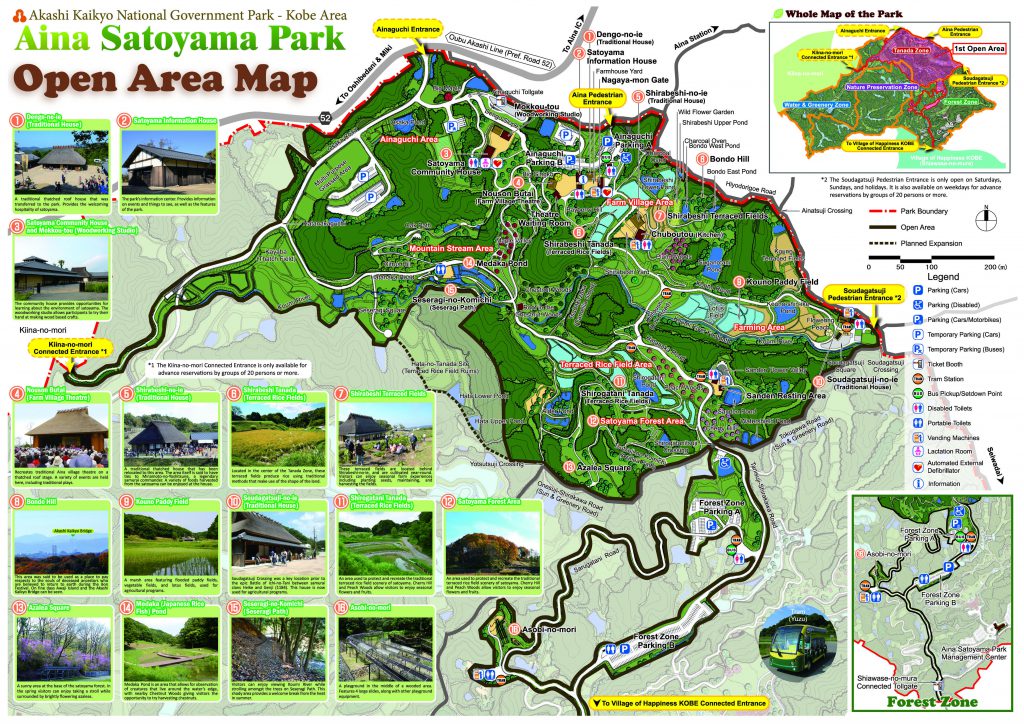
-
1. Dengo-no-ie (Traditional House)
 A traditional thatched roof house that was transferred to the park. Provides the welcoming hospitality of satoyama
A traditional thatched roof house that was transferred to the park. Provides the welcoming hospitality of satoyama -
2. Satoyama Information House
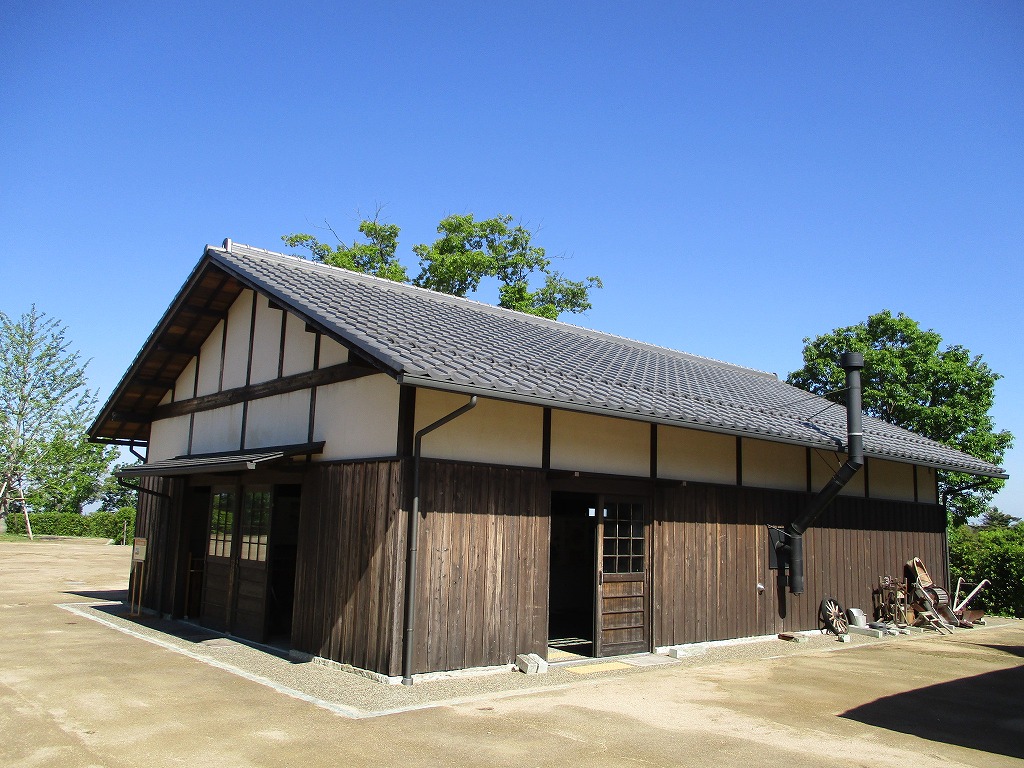 The park’s information center. Provides information on events and things to see, as well as the features of the park.
The park’s information center. Provides information on events and things to see, as well as the features of the park. -
3. Nouson Butai (Farm Village Theatre)
 Recreates traditional Aina village theatre on a thatched roof stage. A variety of events are held here, including traditional plays.
Recreates traditional Aina village theatre on a thatched roof stage. A variety of events are held here, including traditional plays. -
4. Satoyama Community House and Woodworking Studio
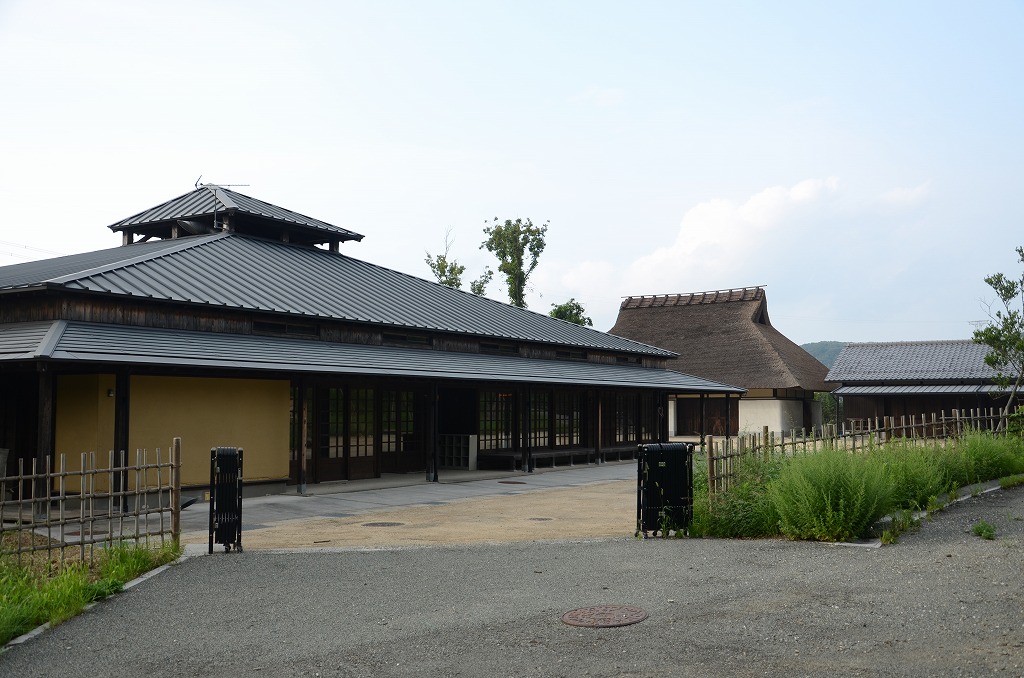 The community house provides opportunities for learning about the environment of satoyama. The woodworking building allows participants to try their hand at making wood based crafts.
The community house provides opportunities for learning about the environment of satoyama. The woodworking building allows participants to try their hand at making wood based crafts. -
5. Shirabeshi-no-ie (Traditional House)
 A traditional thatched house that has been relocated to this area. The area itself is said to have ties to Minamoto-no-Yoshitsune, a legendary samurai commander. A variety of foods harvested from the satoyama can be enjoyed at the house.
A traditional thatched house that has been relocated to this area. The area itself is said to have ties to Minamoto-no-Yoshitsune, a legendary samurai commander. A variety of foods harvested from the satoyama can be enjoyed at the house. -
6. Shirabeshi Tanada (Terraced Rice Fields)
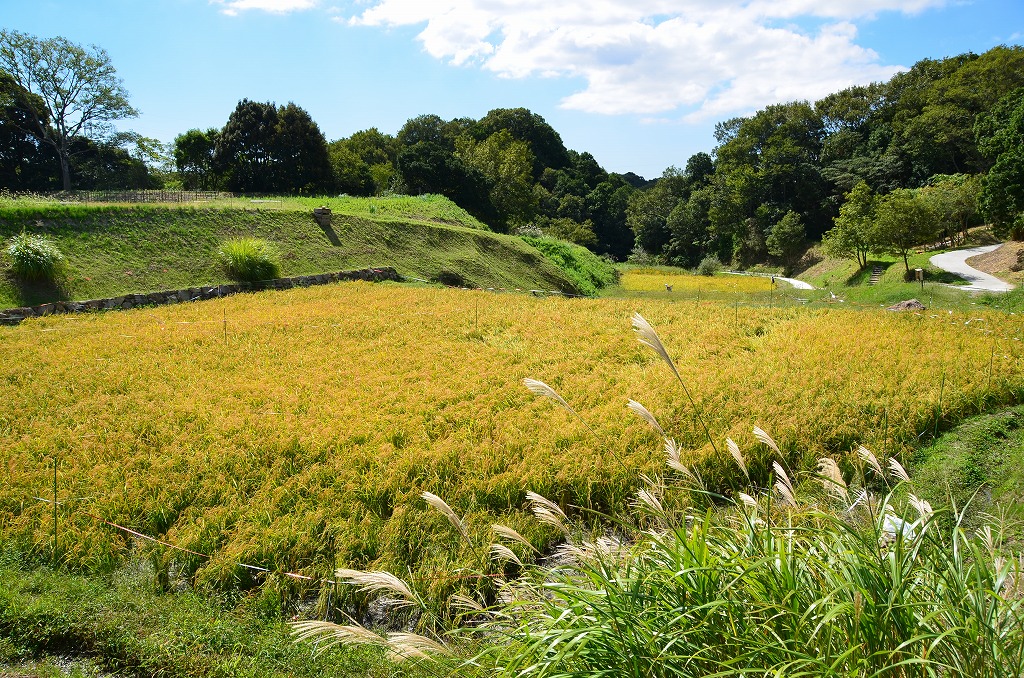 Located in the center of the Tanada Zone, these terraced fields produce rice using traditional methods that make use of the shape of the land.
Located in the center of the Tanada Zone, these terraced fields produce rice using traditional methods that make use of the shape of the land. -
7. Shirabeshi Terraced Fields
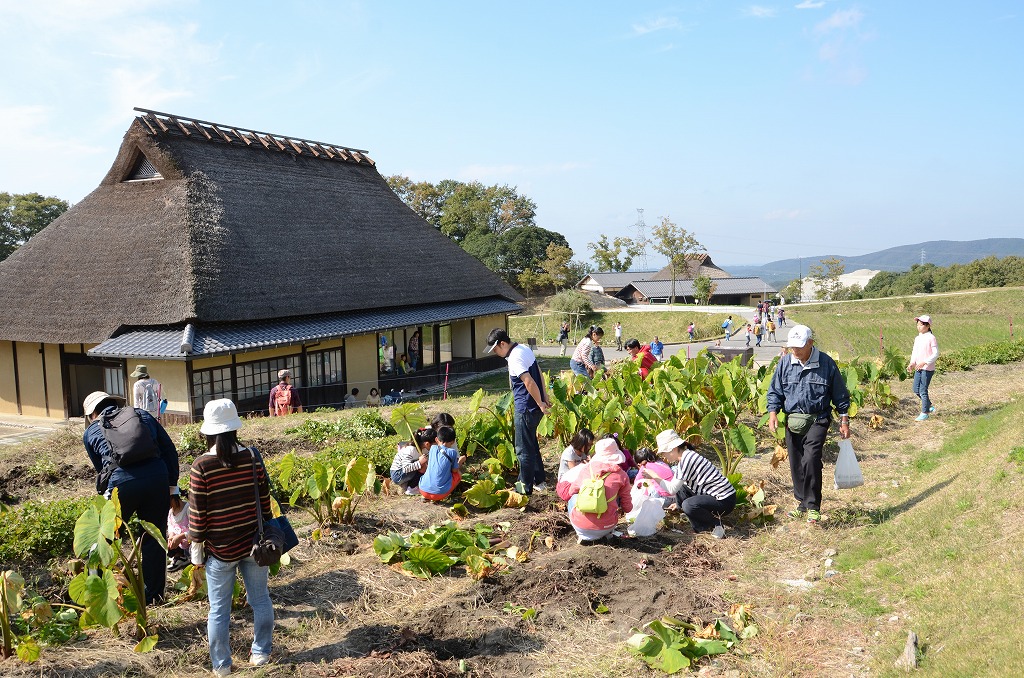 These terraced fields are located behind Shirabeshi-no-ie, and are cultivated year-round. Visitors can enjoy seasonal farm experiences including planting seeds, maintaining, and harvesting the fields.
These terraced fields are located behind Shirabeshi-no-ie, and are cultivated year-round. Visitors can enjoy seasonal farm experiences including planting seeds, maintaining, and harvesting the fields. -
8. Bondo Hill
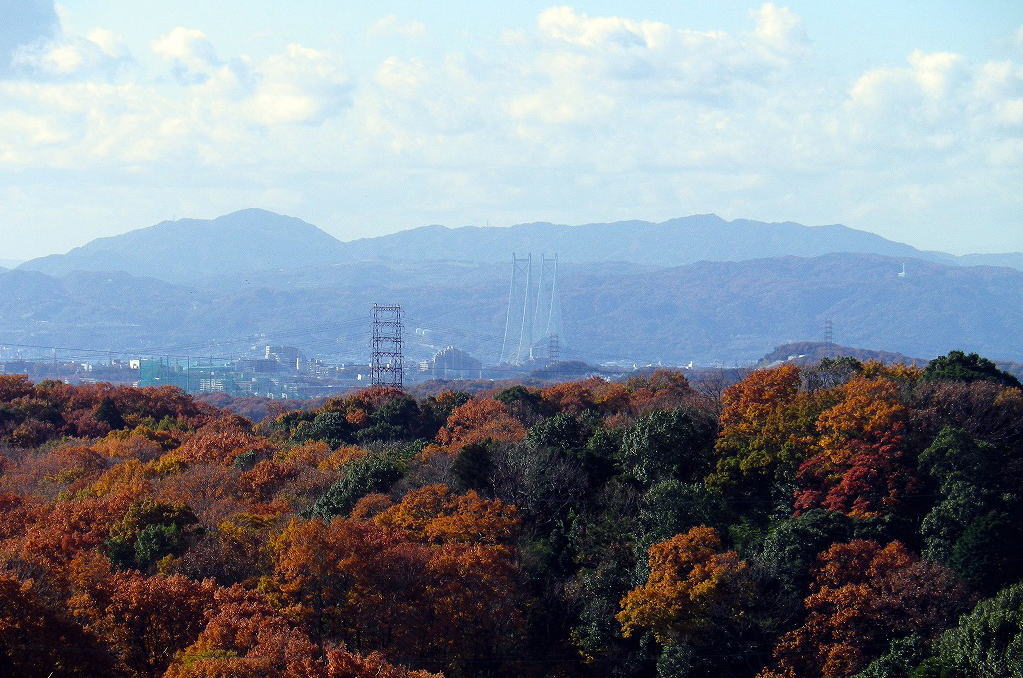 This area was said to be used as a place to pay respects to the souls of deceased ancestors who are believed to return to earth during the Bon Festival. On fine days Awaji Island and the Akashi Kaikyo Bridge can be seen.
This area was said to be used as a place to pay respects to the souls of deceased ancestors who are believed to return to earth during the Bon Festival. On fine days Awaji Island and the Akashi Kaikyo Bridge can be seen. -
9. Kouno Rice Field
 A marsh area featuring flooded paddy fields, vegetable fields, and lotus fields, used for agricultural programs.
A marsh area featuring flooded paddy fields, vegetable fields, and lotus fields, used for agricultural programs. -
10. Soudagatsuji-no-ie (Traditional House)
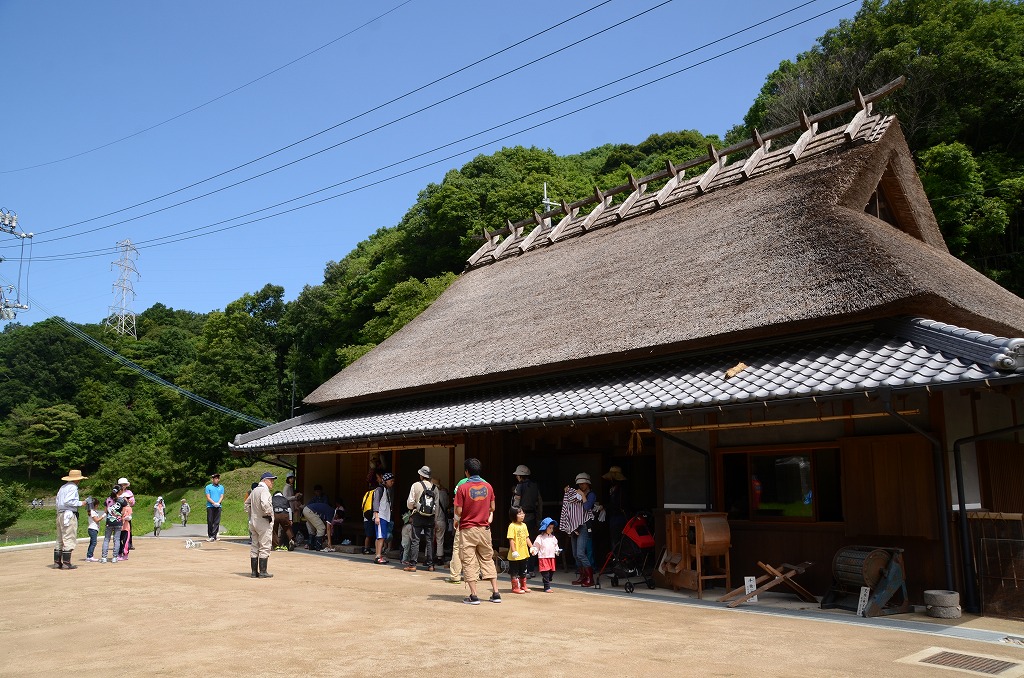 Soudagatsuji Crossing was a key location prior to the epic Battle of Ichi-no-Tani between samurai clans Heike and Genji (1184). This house is now used for agricultural programs.
Soudagatsuji Crossing was a key location prior to the epic Battle of Ichi-no-Tani between samurai clans Heike and Genji (1184). This house is now used for agricultural programs. -
11. Shirogatani Tanada (Terraced Rice Fields)
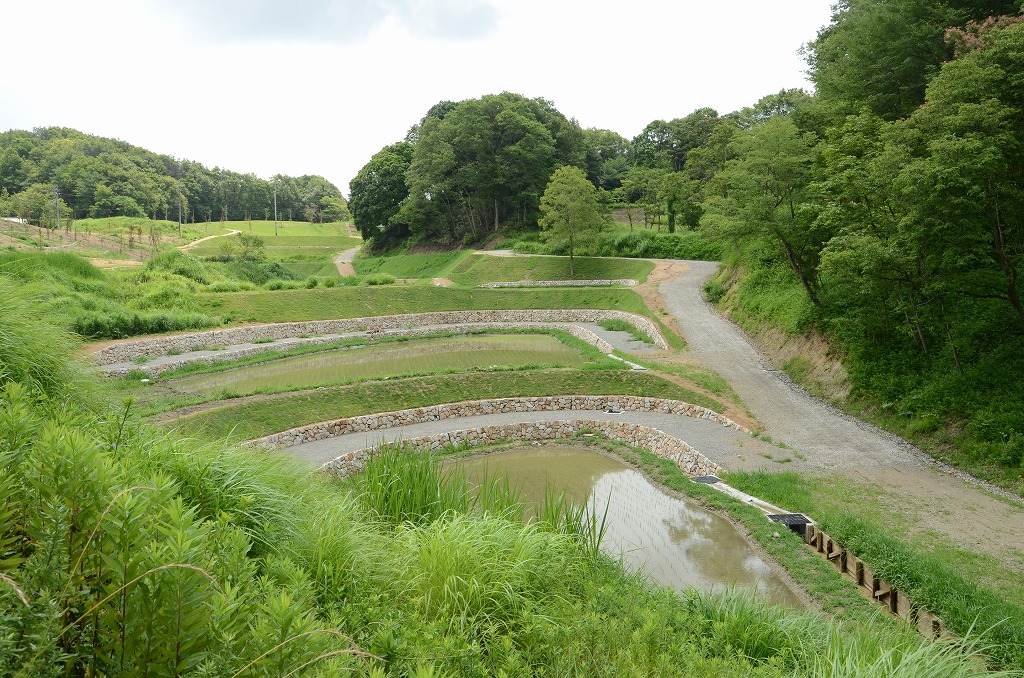 An area used to protect and recreate the traditional terraced rice field scenery of satoyama. Cherry Hill and Peach Woods allow visitors to enjoy seasonal flowers and fruits.
An area used to protect and recreate the traditional terraced rice field scenery of satoyama. Cherry Hill and Peach Woods allow visitors to enjoy seasonal flowers and fruits. -
12. Satoyama Forest Area
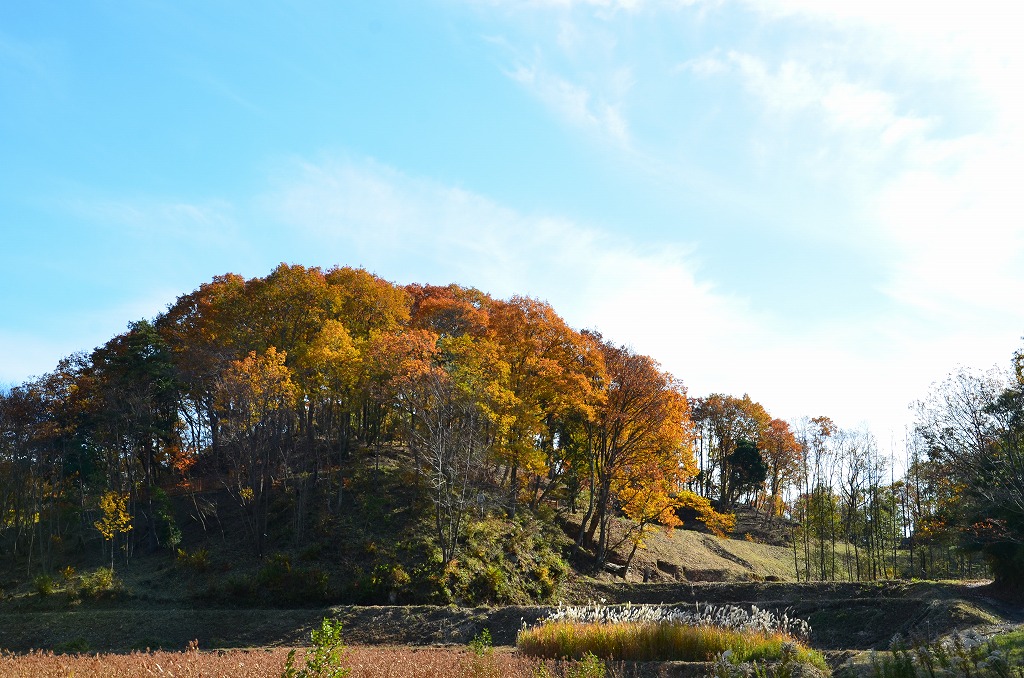 A satoyama area that has had its bamboo and greenery cultivated by hand, creating a sunny, forested area of deciduous trees.
A satoyama area that has had its bamboo and greenery cultivated by hand, creating a sunny, forested area of deciduous trees. -
13. Azalea Square
 A sunny area at the base of the satoyama forest. In the spring visitors can enjoy taking a stroll while surrounded by brightly flowering azaleas.
A sunny area at the base of the satoyama forest. In the spring visitors can enjoy taking a stroll while surrounded by brightly flowering azaleas. -
14. Medaka (Japanese Rice Fish) Pond
 Medaka Pond is an area that allows for observation of creatures that live around the water’s edge, with nearby Chestnut Woods giving visitors the opportunity to try harvesting chestnuts.
Medaka Pond is an area that allows for observation of creatures that live around the water’s edge, with nearby Chestnut Woods giving visitors the opportunity to try harvesting chestnuts. -
15. Seseragi-no-Komichi (Seseragi Path)
 Visitors can enjoy viewing Koumi River while strolling amongst the trees on Seseragi Path. This shady area provides a welcome break from the heat in summer.
Visitors can enjoy viewing Koumi River while strolling amongst the trees on Seseragi Path. This shady area provides a welcome break from the heat in summer. -
16. Asobi-no-mori
 A playground in the middle of a wooded area. Features 4 large slides, along with other playground equipment.
A playground in the middle of a wooded area. Features 4 large slides, along with other playground equipment.

















